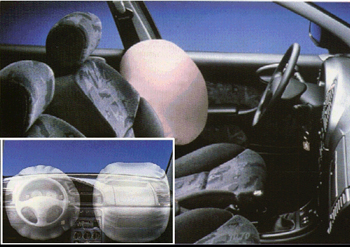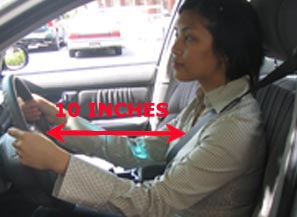Air Bags

Most new vehicles have air bags to provide vehicle occupants extra protection in a collision. They provide a protective cushion between the person and the steering wheel, dashboard, and windshield. Note that seat belts and air bags are designed to work together, and injuries may occur if seat belts are not used in air-bag-equipped vehicles.

Air bags are stored in the steering wheel or dashboard and inflate during a serious collision, usually a front collision that occurs at over 10 mph. To do its important job, an air bag comes out of the dashboard at up to 200 mph, faster than the blink of an eye. It takes about 10 inches of space to inflate. The force of an air bag can hurt those who are too close to it.

Air bag related injuries can be prevented by following these safety tips:
- Driver and front seat passengers should be moved as far back as practical, particularly people of short stature. It is recommended that you sit at least 10 inches away from the air bag.
- Everyone should wear both lap AND shoulder belts and remove any excess slack in the belt.
- Children 12 and under should ride buckled up in the rear seat.
© 1997-2025 DriversEd.com. All rights reserved. Please see our privacy policy for more details.






